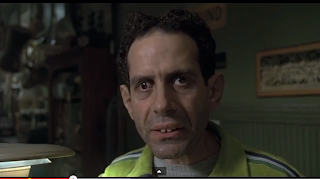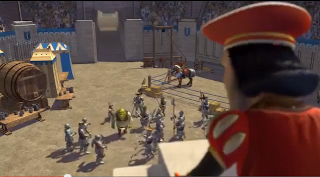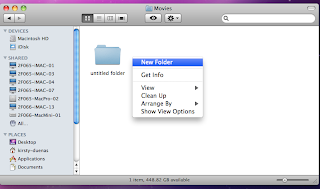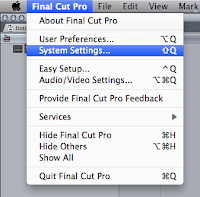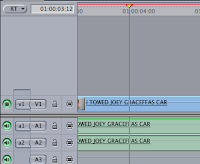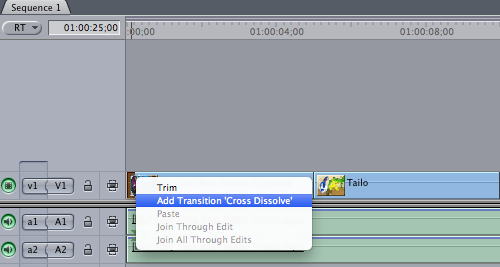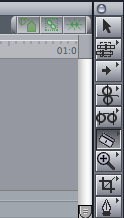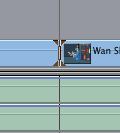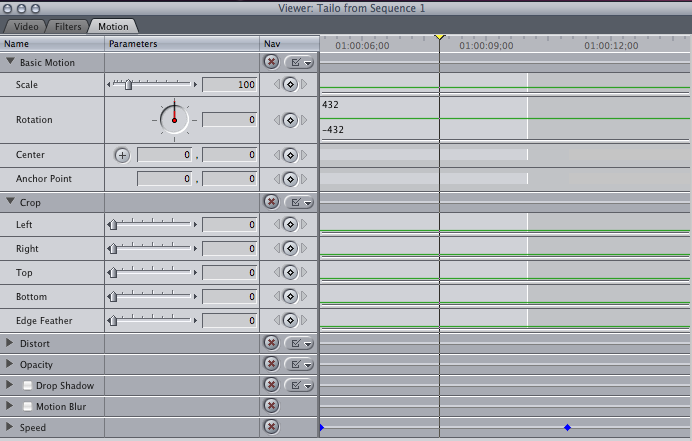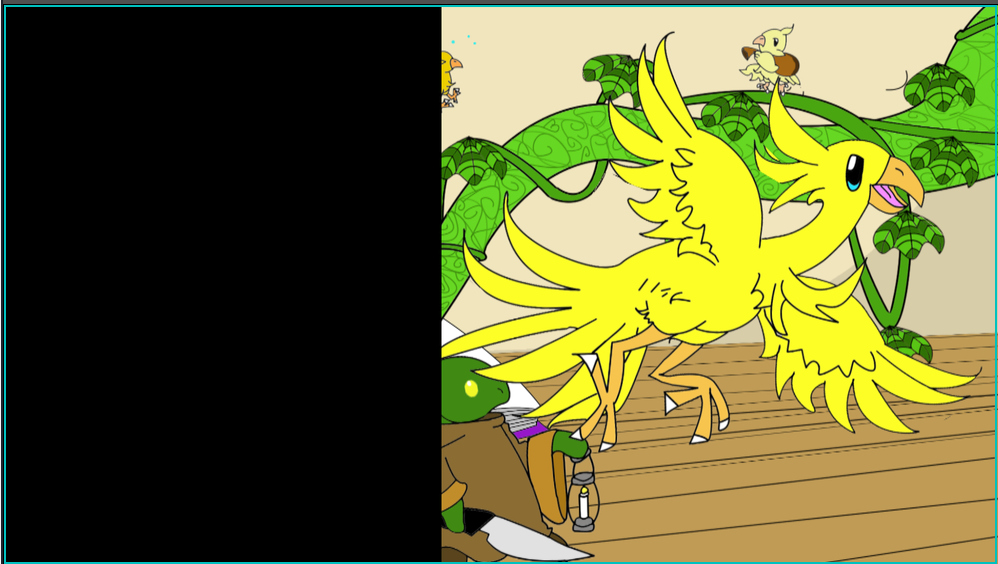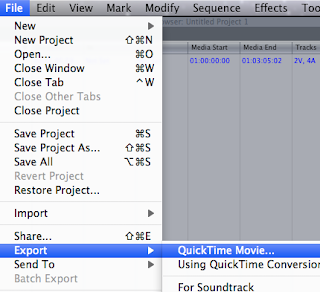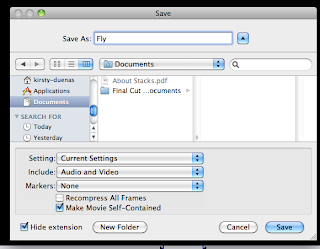"Let It Go" By Fossil Collective
http://www.youtube.com/watch?v=J5nE1510oYo
This music video shows many of Andrew Goodwin's characteristics for music videos.
The music video falls into the genre of romantic tragedy. This can be seen through the narrative which follows the man "Edward" who begins working throughout the years of his life to build a ladder to reach the woman "Anne" who is stuck on the moon after he fell out of the hot air balloon on their journey. The music video conforms to genre it is based off. The tragedy element comes from the separation of the couple and the aspect that it takes years before they are re-united. The main character Edward is shown to be very determined and is the male character that "refuses to give up until he is with her" which is found in the typical romance genre. Also part of the romance genre is that of which the male characters perseverance is then rewarded with the "happily ever after" scene at the end when Edward is able to embrace Anne. By using film genre's in the music video it helps elect a emotional response from the audience who will recognise certain conventions, thus making them want to watch the video to what will happen in it's narrative while also making the music itself more memorable.
The music video shows the ideas of romance through a flashback (another technique typically used in film) at the beginning, the couple are seen together in a hot air balloon, the lyrics at this point are "we were an island, you were the one who broke away" this also matches the visuals since it connotes the idea of them being together and then being separated as happens during the scene when Edward falling out of the basket. The visuals and lyrics also match during the clip when Edward is looking out to the moon and stars the lyrics are then "only when the moon is high enough, only when the stars are light enough." In the case of this song it could be interpreted as a cautionary tale for young romance, the lyrics "we started something, tried to make a fire without a flame" referring to teens or young adults trying to be a couple before they are ready. This also matches with the next lyric "why it wasn't right I couldn't say" which connotes that sometimes relationships don't work but no one is always to blame. The "Let it go" chorus is the main moral of the song, that when things don't work out you shouldn't hold on but should instead move on. If this was the interpretation of the lyrics then the visual would be a metaphor for this, Edward and Anne would symbolise the young couple, their separation would symbolise insecurity at not being ready to commit to each other. Their years apart from each other would symbolise the time it takes before they would be ready to be together (which for young people it can feel like a long time before they grow up). However the happy ending symbolises that even if it seems a long time you will eventually you will be ready to have a serious relationship however you shouldn't on until that moment. By creating these links between lyrics and visuals it means a deeper meaning behind the song can be conveyed to the audience through both the narrative and audio. This allows audiences to try and interpret the song and will therefore engage more with the text meaning they are more likely to enjoy it and listen/watch it again
The angles of that the camera and pacing is used to gain an emotional response from the audience. For example the camera is at a high angle showing Edward cling to the base of the balloon which shows the audience the height the characters are, this is followed by the fall which is in slow motion to make it appear like a long drop. The camera zooms out slowly backwards from Anne while the screen turns grey, this is also used to portray Edward's vision of watching her get further away. All of this is done slowly so that the visuals match the pace of the song while also making it seem more dramatic to the audience. The use of this slowness is kept throughout the entire video as it is a core part of the narrative, for example Edward must wait years for the trees to grow back so he can continue building his ladder. This passage of time is shown through the sped up process of night and day paralleled with close ups of the tree shoots growing and a close up of Edward's face so his white hair can be seen. This is used to create the tragedy aspect of the genre and also matches the continued slowness of the song, therefor creating a relationship between the music and the visuals.
The video also follows a visual style that the artists like to use. They have used stop motion in another one of their songs "On And On." Since they are an independant group they use this style to make themselves stand out from other music videos, it is also done because cheap materials such as paper and lego is used to create the videos meaning from selling their songs they can easily make back the money they spend making it.
There are many references made to other media throughout the music video, while the character is falling the camera shows some records falling with him in slow motion. These also appear in other scenes of the video, these are Radio 4's Desert Island Discs. The idea of building a ladder from earth materials to reach the moon is also a reference to the creative capabilities within the video game Minecraft.
The video doesn't make use of any voyeurism however it does make references to the notion of "looking" as Edward is seen unfolding a telescope which the camera zooms in on, the clip then cuts to the point of view through the telescope showing Edward looking at Anne on the moon. A few seconds later Edward is seen climbing a tree and then a panning shot across a long shot is used to show him staring at the moon. This means that this music video uses all characteristics found in Andrew Goodman's theory.
"Diary Of Jane" By Breaking Benjamin
http://www.youtube.com/watch?v=DWaB4PXCwFU
This song like "Let It Go" in that it is also very narrative driven however unlike Fossil Collective the band is a major label, this means the style of the music video is very different. The band itself is part of the rock band genre, meaning it uses a lot of the band playing it it's footage, this is also due to it's major label status as it is used as a motif so the audience can identify the product based on the band members being in the video. The colours used is also part of the style of the band as they tend to play in darkly lit areas with plenty of shadows which is also reflected in their music videos which also have lighting placed to increase shadow.
Another contrast to "Let It Go" is that "Diary Of Jane" utilizes lip sinking which is used as the main link between visuals and lyrics, the majority of lyrics is seen sung by the lead singer while the band is playing on in the music video, this is because Breaking Benjamin uses the band members themselves as the recognisable product for the audience while Fossil Collective instead uses it's stop motion style. Apart from the lip syncing however there are other instances when the narrative of the music video matches the lyrics for example the lyric "as I look the other way" is linked with a medium close up of Jane, the woman, turning her head. Also the diary that the song is about is also shown in the music video both through long shots at the beginning of the video making it hard to see and close ups at the end of the video ensuring that it can be seen. This is done to enhance the narrative similar to how a film would place a plot device for example something of unknown importance is introduced at beginning of story (diary) which is then brought back later and explained so audience can fully understand the importance of the device (it belongs to Jane who is now dead). By using a convention seen more commonly in films it helps audiences understand the weight of the narrative that the music video is trying to portray and can encourage audiences to engage with the music video by trying to figure out it's meaning before the answer is revealed. The song could be interpreted to be about a man (Benjamin) who has lost his love (Jane) and so began reading her diary about her life only to discover that he isn't mentioned at all in it. This can be taken from the lyrics "I will try to find my place in the diary of Jane." After discovering this he starts to destroy pieces of the diary in a desperate attempt to find some mention of himself which links with the lyrics "As a burn another page, as I look the other way." Because he can't find any mention of him he starts to hate Jane for apparently not loving him as much as he thought which can be derived from the lyrics "There's a fine line between love and hate" and "No love, there is no love." Because he is destroying parts of the memories Jane wrote this explains why when Jane is wandering around her house she finds objects missing, can't see herself in the mirror and looks around like she is missing someone else. It could be interpreted that the missing things are the parts of the diary that have been destroyed by Benjamin who ultimately decides to leave the diary behind. It is this kind of interpretation that the audience is encouraged to make when watching the videos because it allows them to become more invested in the song and the video which drops hints about it's narrative throughout as demonstrated.
The music changes pace from it's intro to the verses and chorus, this prompts the visuals to change with it in a much more diverse way than "Let It Go" which was constantly slow and so only had to have the visuals remain slow in "Diary Of Jane" the visuals like the music starts slow before speeding up. The beginning of the song starts with a slow beat which the visuals match with slow panning shots in the forest and into the house where Jane is. As the music picks up Jane jerks awake at the same time a sound bridge like link between the scene with Jane and the band playing. From here almost every beat results in a shot change of a different view of the band or of Jane. This is also done with the lyrics as some words end results in a shot change as demonstrates here:
"So (close up) tell (medium long shot) me (long shot) how (close up) it (medium long shot)
should (medium long shot) be (medium close up)."
This helps create continuity within in the shots, the clip changes don't feel awkward since they are in time with the beat and are almost unnoticeable. The look of narrative also matches the lyrics as it is a sad song that connotes death and desperateness the visuals are full of shadows and dull colours, this is also part of the motif of Breaking Benjamin.
The song uses a main female character in the music video however in the beginning when she is in the bath the camera only focuses on her face and her body remains unseen. Throughout the music video she wanders around wearing a white low cut dress however despite this the camera still remains at a high angle and her face is the focus of the shots that don't go below her neck. Because of this there are no sexual connotations in the music video and voyeurism is avoided. However the video still references the notion of looking, this time instead of using telescopes it uses mirrors. Near the end of the music video Jane spends some time staring into the mirrors even though she can't be seen.
Although "The Diary Of Jane" also follows much of Andrew Goodwin's theory it however doesn't seem to contain any intertextual references making it different from Fossil Collectives "Let It Go."
"Sing For Absolution" By Muse
http://www.youtube.com/watch?v=6Ck6Hcg2cjk
The music video for this song plays very heavily on the sci-fi genre which is used to portray the narrative of the music video, because of this the rock band don't use the same conventions that Breaking Benjamin used despite them both being from the same genre of music. Unlike rock bands like Breaking Benjamin and other major label bands in this video no live stage footage or footage of the band playing is used, the entire video is dedicated to the narrative making it appear as a short film. This is very different to the style that the band usually goes for as their other music videos like "Resistance" and "Time Is Running Out" do conform to the usual rock band genre conventions by using stage footage and the band playing the the video footage. Absolution was the name of the album that this song and others were sold on so it is possible the music video was made differently to stand out amongst other bands and their own work which would draw audiences more to the album because the video was different and new for a rock band genre. Also by using motifs (advanced tech city/space ships) found in popular sci-fi genres this would also attract a larger audience who would be fans of these products.
Lip syncing is used to link the lyrics with the visuals as the main singer, who is focused on more than the rest of the band, is seen singing throughout the video. Whenever he says the chorus "Sing for absolution" a grand event happens at the same time with the rise of the music making it feel like the music has to get louder in order for us to hear over the visuals for example first he sings it over the launching of the ship, then next over the ship jumping to light speed and finally during the ships entering a planets atmosphere. At this point the lyrics "falling from your grace" also match the visuals of the ship falling to the planet below. The visuals alone tells the story of a sci-fi survival genre, the three astronauts must leave earth on a mission to save some people, already in stasis in space, from the ice age that has hit Earth. However they lose the stasis ship during the collision with asteroids and end up stranded on an alien planet. The ending scene however implies that a distress alarm has been activated on the stasis ship and so there is hope they will be rescued. The music paired with this story seems intended to create a juxtaposition as the music is very slow and calm while the visuals are action packed and exciting. This is done to portray meaning to the audience while telling a story that audiences are familiar with and enjoy seeing.
The establishing shots of the music video are designed to cut during each main beat of the music for example on the beat an extreme long shot of the city is shown, on another beat a low angle of the ship preparing to launch is shown and then the next beat is followed by a cut into the cockpit of the ship. When the music picks up and becomes loud for the chorus this is followed by the ships launch as well as the jump to lightspeed and also plays loud during the crash. This has been done to make the events on screen seem grand and important as well as giving the illusion that the event itself is loud (like you would expect in films) even though you can't hear it (or it is very quiet) in the video. The instrumental also begins exactly as the ship comes out of lightspeed into the asteroid field and plays during the ships attempts to dodge the asteroids, this makes the scene appear intense and is placed in the same way that music in sci-fi action scenes would be placed. Ss the music becomes quiet and slow at the end the visuals are also less hectic symbolising the end of the action.
Unlike both previous videos there are no female characters in the video, the only woman being the brief clip of the notice board in space however this board only shows her face so there is no voyeurism in the video. However like the other clips it also uses the notion of looking, however it is neither through telescopes or mirrors, instead it is through the screens on the ship which is shown multiple times in order to show the collision warnings, the power for the preparation for launch and the inside of the stasis ship.
There are debatably many intertextual references made in this video since it is a play on the sci-fi genre, the music video made in 2004 uses a futuristic city that looks very similar to Coruscant from The Phantom Menace released in 1999 as well as the space ships which also seems designed similarly to this film. Also the astronaut suits appear similar to the suits in the Alien movies because of this it makes the video look like an homage to sci-fi films, the narrative of the video also fits with this idea.
"Men In Black" - Will Smith
http://www.youtube.com/watch?v=rRuHk6Drj2U
This music video plays heavily on marketing as co-branding is used by making Will Smith the main character of the film also perform in a music video for the purpose of being sold to the audience. Because of Will Smith popularity he is shown in many close ups throughout the video, this conforms to one of Andrew Godwin's theories and is done for marketing purposes. This is a form of synergy as Will Smith is collaborating with the music director Robert Caruso and Columbia Pictures for with the intent of promoting these related products. This is done on purpose as it will make more money for the producers who will be able to sell the music and film while also further promoting the film since the music will be sent out to different music charts, channels and albums. The film also simultaneously promotes the music video as it is can be found at the end of the film and therefore can be sold on VHS (at the time of release) DVD, TV and internet.
The lyrics match with the purpose of promotion for the film as they pretty much just describes the Men In Black organisation that the film is based around with the some of the visuals showing clips from the film and then towards the end the remaining time being taken up with a dance number. Again this is to promote the film as those that have brought the album or have seen the music video on the internet or a music channel may become interested in the film it is based on while also not having the film spoiled as the music video doesn't contain any specifics on the plot of the film.
The video also plays to a lot of Andrew Goodwin's theory as the genre of the music is hip-hop it has a dance number to go with it which includes an alien so that it still links with the sci-fi genre of the movie it is based of. There is also links between the visuals and lyrics as when Will says "Here comes the MIB's" Will is shown coming in a car with agents in a car. And later on Will says "Means what you think you saw you did not see" when he says this he shows a card which then disappears. The lyrics are used in parts to link with the visuals of the film that are shown in parts such as when Will says "extraterrestrial violence" a clip from the film is shown of a car being destroyed by a falling fire ball. This is used many times throughout the film to attract the audiences attention to the film and give them information without spoilers.
The song also features intertextuality as a lyric from "Forget Me Nots" has been referenced and rewritten from "I want you to remember" to "They won't let you remember" in reference to the neutralizers memory erasing capabilities and Patrice Rushen the artist of "Forget Me Nots."




